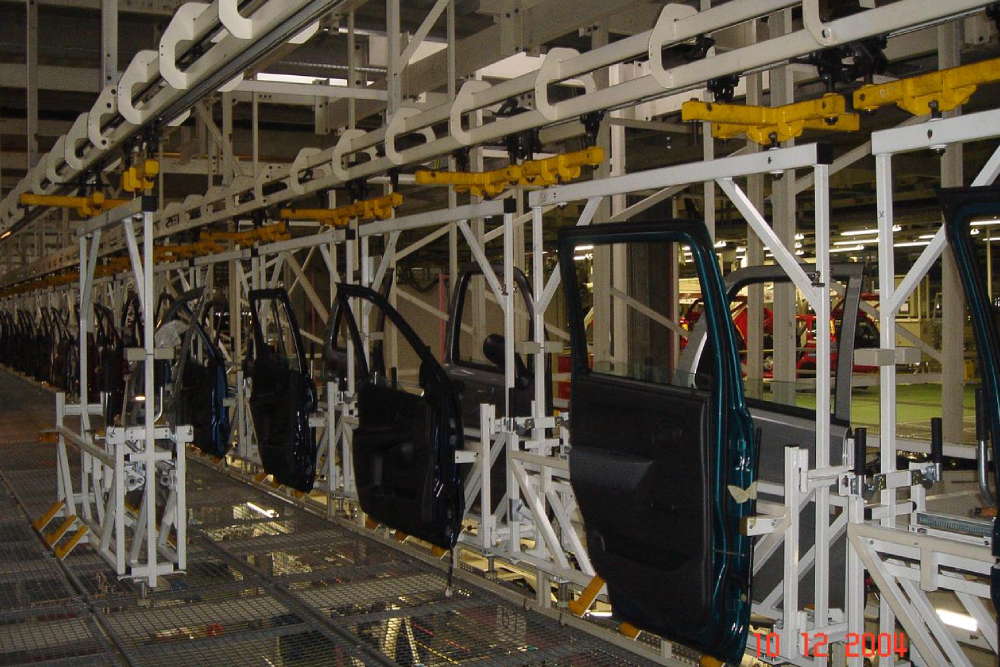

As the automation industries evolve, so do the demands for smarter, more versatile conveyor solutions. Among the many options available, Power and Free Overhead Conveyor Systems and Traditional Conveyor Systems stand out.
They are game changers in their own right. But what truly separates these systems? And how do you decide which one fits your unique operational blueprint?
Let’s understand the nuances, advantages, and transformative potential of these industrial workhorses to help you engineer the perfect material handling solution.
Understanding the Core of Conveyor Systems
At the core of modern industrial operations lies a silent, tireless force, the conveyor system. These engineering marvels streamline the movement of materials, transforming once labor-intensive processes into highly efficient workflows. Whether it’s navigating the complexities of a warehouse, transferring car bodies on an assembly line, or sorting luggage at an airport, conveyors stand as the unsung heroes that drive operational excellence, reduce costs, and enhance workplace safety.
Traditional conveyor systems include belt, roller, and chain configurations that transport goods along fixed, linear paths. Their simplicity makes them reliable for straightforward tasks, such as moving items between workstations or transporting goods within warehouses.
Understanding the Core of Power and Free Overhead Conveyor Systems
Power and Free systems operate on dual tracks:
- Powered Track – Drives the movement of free trolleys.
- Free Track – Allows trolleys to stop, accumulate, or switch paths independently.
Here’s how it works:
The carriers attached to the trolleys are typically driven by a pusher dog assembly. This mechanism disengages when accumulation is needed, allowing the chain to continue moving while the carrier temporarily halts. The result? Independent movement of loads without disrupting the entire production line.
Which Conveyor System Is Right for You?
When evaluating conveyor systems, it’s essential to consider the operational nuances that differentiate these technologies. Power and Free Overhead Systems excel in environments where material flow must be synchronized with complex production stages, offering capabilities like accumulation, indexing, and elevation changes. Meanwhile, Traditional Conveyor Systems shine in applications requiring uniform, high-throughput movement across standardized workflows. Factors such as energy efficiency, required maintenance intervals, and adaptability to future process modifications play a critical role in determining long-term value. Each system addresses unique challenges, ensuring efficiency and precision when aligned with the specific demands of your industry.
Your choice depends on your operational needs:
Choose Traditional Conveyor Systems, if your processes are straightforward, repetitive, and cost-sensitive.
Opt for Power and Free Systems, if you require flexibility, scalability, and precision in handling diverse loads or complex workflows.
Here’s a balanced comparison chart highlighting the benefits of both:
| Feature | Power and Free Overhead Conveyor Systems | Traditional Conveyor Systems |
| Mobility | Easily integrates with complex, multi-stage operations. | Straightforward expansion for linear workflows. |
| Load Handling | Supports diverse weights, from light to very heavy loads. | Handles a broad range of materials efficiently. |
| Space Utilization | Optimized for vertical and multi-level layouts. | Ideal for horizontal layouts and straightforward processes. |
| Operational Efficiency | Excels in environments with varying production rates. | Consistent performance for steady, high-volume tasks. |
Conclusion
In reality, the optimal solution often lies in a hybrid approach, combining the strengths of both systems. By carefully analyzing specific operational requirements and future growth plans, manufacturers can create a customized conveyor solution. This can help strike the perfect balance between efficiency, flexibility, and cost-effectiveness.
Visit automagindia.com to transform your material handling processes today!
ALSO READ


